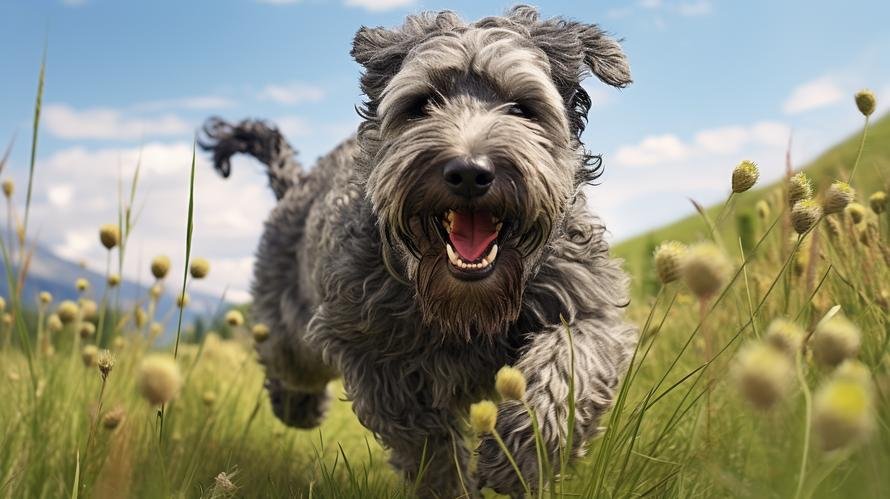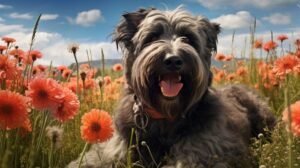Before we embark on the shedding rollercoaster, did you know something utterly amazing about the Bouvier des Flandres? Here is a canine breed with a duplicitous nature so incredible, it might make Hollywood scriptwriters toss their pens in surrender. Bouvier des Flandres, a charming multi-talented breed that’s equally comfortable herding cattle on a rustic farm, or slobbering kisses on a suburban family. Now isn’t that a fascinating start?
But there is one question that often looms large on the minds of prospective dog owners when considering this breed – Does the Bouvier des Flandres shed a lot?
Relax, take a deep breath, and brace yourself for the surprising truth many dog lovers have discovered. The answer is a resounding – “Not really!” Yes, you read it right. Relatively speaking, the Bouvier des Flandres doesn’t shed as much as you might expect.
You see, unlike many canine breeds that remove loose, dead hair by shedding, the Bouvier des Flandres’ unique double coat catches and holds onto most shedding hair. This means less dog hair decorating your house or clinging stubbornly to your lucky black slacks when Fido decides to rub against your leg. However, this also means that the captured hair can cause matting and tangling if not attended to diligently.
Now, it’s not all sunshine and roses. There are few things you should note. The breed still does shed, just not as intensively as many other breeds. The Bouvier’s shed hair usually gets entangled within its dense undercoat, creating small hairballs, rather than a fluttering flurry of fur. This rankles a few owners, but many actually prefer this to having to hunt down stray hairs all over the house.
Is there a way to manage this? Absolutely! Regular grooming is key. This breed benefits from a good brushing session at least once every week to keep its coat in top shape. Using a slicker brush or a rake, you can eliminate the loose hairs entangled in the undercoat, curbing any mats and hairballs before they become unmanageable.
Is that all there is to it? Not quite. A little-known trick that can help manage your Bouvier’s coat is a process called “stripping”. This is the act of hand-plucking or trimming the old, dying hairs from the dog’s coat. Many professional groomers perform this service, or you can learn to do it yourself. It helps keep the coat healthy and vibrant.
Seasonal shedding can also occur, usually in the spring and fall. This is when a more intensive grooming regimen might be necessary, including stripping, bathing, and blow-drying. Even though the Bouvier des Flandres does not shed a lot, these periods require regular grooming to control the minimal shedding.
Although grooming can seem like an exercise in endurance, remember it’s also a wonderful bonding experience for you and your beloved pet. Use these moments to analyze their coat and skin for any irregularities, ensuring good health and contentment.
If you’re allergic to dogs, remember that no dog breed, not even the low-shedding Bouvier des Flandres, is completely hypoallergenic. However, they do rank among the better breeds for allergy sufferers due to their low-shedding tendencies.
Are you thinking of leaving it all to professional groomers? Hold your horses! Regular grooming is an excellent way to bond with your Bouvier des Flandres, and they love the attention too. Plus, it’s a prudent way to ensure that your dog’s coat is being looked after, saving you untold worry and dollars!
In conclusion, despite the size and fluffy appearance of these amazing animals, the Bouvier des Flandres doesn’t shed heavily. Isn’t that a relief? Of course, grooming is still an integral part of their care. But for a dog that gives as much love and loyalty as a Bouvier, isn’t it worth putting in that little extra effort?
Ultimately, the love that these dogs shower upon their owners far outweighs the minor inconvenience of a few hairballs. With just a little foresight and regular grooming, owning a Bouvier des Flandres can be a delightful and rewarding experience. Now, isn’t that a tail-wagging happy ending?



